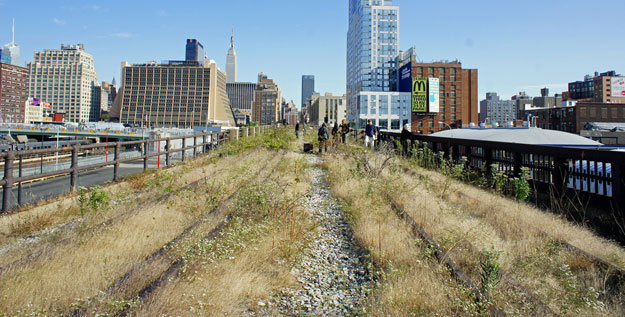
Before the High Line became a tourist destination it was a classic post-industrial decay scenario: an elevated botanical garden of weeds and wild grasses that you could only view from the upper floors of certain West Side buildings. (Above is one of the last of such glimpses, from two years ago.) It had charm as a bit of random, windblown nature existing in the city and when it came time for it to be yuppified as a city park, the architects and promoters made a big to-do about using only "native plants and grasses" to landscape after they tore out all the random stuff.*
Now, maybe not so much. Buried in a recent Salon scare story about supposed cold-resistant cockroaches invading New York (always, something is invading) lies the nugget boldfaced below:
New York’s High Line, an abandoned elevated railway transformed into the city’s hottest new park, is responsible for attracting swarms of tourists to Manhattan’s West Side, revitalizing/gentrifying the area and, according to researchers at Rutgers University, introducing a new species of cockroach never before seen in the U.S.
Periplaneta japonica, common in Asia, was first spotted by an exterminator in 2012. The researchers believe it arrived as a stowaway in one of the imported plants adorning the park.
Only in America, as we used to say: Real Native Plants Imported from Asia. Also, free (one dollar surcharge may apply in some states).
*The High Line is still pushing the locavore angle but includes the fudge words "focuses" and "most" in these claims:
The High Line's unique landscape was created in partnership with Netherlands-based planting designer Piet Oudolf. For inspiration, Oudolf looked to the existing landscape that grew on the High Line after the trains stopped running. The plant selection focuses on native, drought-tolerant, and low-maintenance species, cutting down on the resources that go into the landscape.
and
Local Sourcing: Most of the High Line’s plants are native species, and many were produced by local growers. Locally-grown plants are better adapted to grow successfully in our climate, reducing the amount of plant failure and replacement costs.
Except when the occasional import from halfway around the globe introduces invasive insect species.
